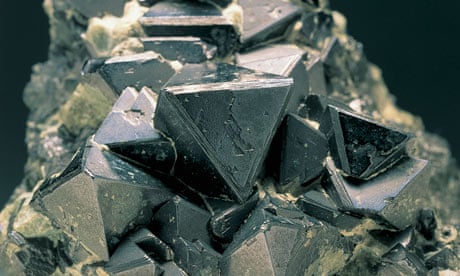Lodestones are composed of magnetite, a mineral form of iron oxide. Like other types of magnetite, they are hard, black and shiny, but lodestones are special because they are naturally magnetised, thanks to the effects of lightning.
Lodestone was well known to the ancients because it attracted iron. The name lodestone comes from the old English meaning "way stone" because a sliver of iron rubbed with lodestone also becomes magnetised, and this is how the first compass needles were made. Lodestones were invaluable to early explorers, including Christopher Columbus.
For centuries scientists have wondered how lodestone became magnetised. Dr Peter Wasilewski of Nasa's Goddard Space Flight Center suggested that it happens as a result of lightning strikes. The brief but extremely powerful electromagnetic field associated with lightning causes all the magnetic domains in the mineral to line up.
Normally these domains are jumbled up and cancel each other out, but when they are aligned the mineral is magnetised. This is similar to what happens in a tape recorder or computer hard disk, which relies on iron oxide particles having their magnetic field pattern altered by an external source.
Wasilewski has proved that magnetite samples can be magnetised in the laboratory, though it's hard to show this occurs in nature until a magnetite outcrop can be checked before and after a lightning strike for the presence of lodestones. The fact that lodestones are found only at shallow depth seems to support the lightning theory.

Comments (…)
Sign in or create your Guardian account to join the discussion